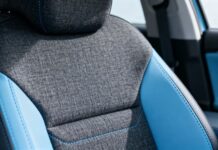The desire for innovation and sustainability is driving a major transition in the fashion business. Fashion has historically relied on traditional textile fibers like wool, polyester, and cotton. But the way their manufacturing methods affect the environment has made many look for more environmentally friendly alternatives.
The newest generation of textile fibers, such as Mycotex, Piñatex, Orange Fibre, and others, provide a fresh approach to fashion in addition to being ecological and often derived from food waste. They provide alternatives that are more ecologically friendly without sacrificing effectiveness or adaptability.
This article investigates these new fibers, looking at their uses, production methods, possible effects on the market for man-made fibers, and how they can influence the development of more environmentally friendly fashion.
Mycotex: Marvel Based on Mushrooms
Overview and Applications: Mycotex is a novel method of producing textiles that is generated from mycelium, the vegetative portion of fungus. Mycelium has the ability to develop into thick, renewable materials that resemble leather. Applications for Mycotex range from accessories and interior design to apparel and footwear. The material is a great substitute for conventional leather because of its inherent flexibility and durability.
Production Methods: The first step in the production of Mycotex is the mycelium growing on agricultural waste products like sawdust or straw. The nutrients required for the mycelium to grow are supplied by these substrates. The procedure entails:
- Inoculation: The growth phase is started by introducing mycelium spores to the substrate.
- Growth: The mycelium spreads and entwines itself to produce a thick mat when grown in a controlled environment.
- Harvesting: The mycelium is taken out after it reaches the appropriate density and thickness.
- Processing: To improve the mycelium’s resilience and flexibility, it is subsequently processed. This might include pressing, drying, and applying a natural coating to increase its water and wear resistance.
As a consequence, a flexible, environmentally friendly material with a broad variety of application possibilities that can be customized to have different textures and thicknesses is produced.
Piñatex: Fiber from Pineapple Leaves
Synopsis and Uses: As a by-product of the pineapple harvest, piñatex is a sustainable textile manufactured from the fibers of pineapple leaves. This novel material is used in the manufacture of upholstery, bags, clothes, and shoes. Piñatex is a distinctive leather-like texture that has been embraced by several fashion manufacturers who are environmentally conscious.
Production Method: Piñatex is produced by a series of steps:
- Harvesting: Following the fruit harvest, plantations provide their pineapple leaves.
- Fibre Extraction: During the decortication process, a machine pulls the long fibers from the leaves.
- Washing and Drying: To get rid of contaminants, the extracted fibers are cleaned and dried.
- Processing into Felt: Next, the fibers are transformed into a nonwoven mesh, which serves as Piñatex’s foundation material.
- Finishing: To get the required texture and durability, the mesh is delivered to a finishing factory where it is colored and treated.
In addition to giving pineapple growers a second source of revenue, Piñatex adds value to agricultural waste and offers a sustainable substitute for leather.
Orange Fiber: Waste Citrus Textile
Synopsis and Uses: A textile called orange fiber is created from the leftovers of the citrus juice business. This novel fiber, created in Italy, turns leftover citrus peel into opulent, silk-like fabric. High-end fashion may benefit greatly from orange fiber, which is a sustainable and biodegradable substitute for silk and other synthetic materials.
Manufacturing Process: Several crucial phases are involved in the creation of orange fiber.
- Citrus Waste Collection: After making citrus juice, peels, seeds, and other byproducts are gathered.
- Cellulose Extraction: The main component of fiber, cellulose, is extracted from the citrus waste using a processing method.
- Fibre Spinning: To create a continuous thread, the harvested cellulose is dissolved and spun into filaments.
- cloth Production: After these threads are woven or knit, cloth may be completed and colored in accordance with design guidelines.
In addition to decreasing food waste, Orange Fibre’s manufacturing method offers a sustainable substitute for traditional fabrics, satisfying the growing demand for environmentally friendly clothing.
Other Prominent Eco-Friendly Fibers
Banana Fibre: The pseudostems of banana plants, which are often thrown away after the fruit is harvested, are the source of banana fiber. The fiber is robust, biodegradable, and appropriate for a range of uses, such as the manufacture of paper and textiles.
The following are involved in the manufacturing process:
- Harvesting: After the banana fruit is removed, pseudostems are gathered.
- Fibre Extraction: To remove the fibers, the stems are mechanically treated.
- Processing: After being removed, the fibers are dried, cleaned, and made into yarnor cloth.
Because of its strength and adaptability, banana fiber is a popular choice for eco-friendly fabrics.
Hemp Fiber: Known for its strength and advantages for the environment, hemp fiber has been used for millennia. Hemp enhances soil health, grows swiftly, and uses less chemicals. It is used in many industrial applications, ropes, and apparel.
The following are involved in its production process:
- Cultivation: Plants containing hemp are grown and harvested.
- Retting: To separate the fibers, the harvested plants go through a procedure called retting that breaks down the pectin.
- Decortication: The stalks are used to remove the fibers.
- Processing: After being cleaned, the fibers are spun into yarn and cloth.
Hemp is a desirable fiber for textiles in the future because of its sustainability and adaptability.
Future Prospects for Sustainable Fibers
The fashion industry’s pursuit of sustainable substitutes for conventional textiles is expected to propel the development and widespread use of eco-friendly textile fibers such as Mycotex, Piñatex, Orange Fibre, and others. Reduced environmental effect, biodegradability, and the use of food and agricultural waste are only a few advantages of these novel materials.
Advantages for the Environment
When compared to traditional textiles, the manufacture of these sustainable fibers often uses less energy, water, and chemicals. These fibers support a circular economy by minimizing waste and lowering the requirement for virgin resources by making use of waste items.
Financial Possibilities
Producers and farmers may benefit financially from the use of sustainable fibers. These fibers bring agricultural byproducts more value, opening up new markets for sustainable materials and generating extra revenue sources.
Customer Engagement
The growing environmental consciousness of customers will inevitably drive more demand for sustainable fashion. Companies may stand out in a crowded market and draw in eco-aware customers by embracing and promoting the usage of these cutting-edge fibers.
Obstacles and Things to Think About
The broad use of these sustainable fibers faces obstacles in spite of their numerous advantages. It is essential to handle crucial variables such as cost reduction, quality assurance, and scaling up production to satisfy global demand. In order to overcome these obstacles and realize the full potential of these novel fibers, further study and funding for sustainable textile technologies are required.
Possible Effects on the Market for Man-Made Fiber
The market for synthetic fibers will be significantly impacted by the emergence of sustainable fibers, especially for fibers like acrylic, polyester, and nylon, which are widely used in textile manufacturing but have serious environmental disadvantages.
Impact on the Environment
The adverse effects of synthetic fibers, which are mostly sourced from petrochemicals, on the environment have been criticized. High energy usage, greenhouse gas emissions, and the discharge of microplastics into the environment are all associated with the manufacture of these fibers. As producers and customers look for more ecologically friendly options, the need for these hazardous compounds may decline as sustainable fibers become more widely available.
Dynamics of the Market
The market for man-made fiber may be disrupted by the growing acceptance of sustainable fibers, which may cause legislative changes and a shift in customer preferences. Policies and laws aiming at curbing plastic waste and encouraging sustainable behaviors are being implemented by governments and organizations around. The use of environmentally friendly fibers might increase as a result of this legislative drive, reducing the need for conventional man-made fibers.
Competition and Innovation
Innovation in the market for synthetic fibers is probably going to be sparked by the introduction of sustainable fibers. Businesses that have historically concentrated on synthetic fibers could spend money on R&D to produce more environmentally friendly and biodegradable iterations of their goods. New materials that blend the advantages of synthetic and natural fibers may be developed as a result of this competition, providing enhanced sustainability and performance.
Financial Aspects
Industries that rely on conventional man-made fibers may face economic consequences when they shift to sustainable fibers. In order to integrate sustainable resources, businesses may need to modify their supply chains, invest in new technology, and adjust their manufacturing procedures. The long-term advantages of following sustainability trends and satisfying customer demand for eco-friendly goods may exceed the early costs associated with this shift.
Shopper Patterns
Demand for sustainable goods and consumer awareness are at an all-time high. Brands that use sustainable fibers may benefit from this trend by strengthening their connections with people who care about the environment and improving their market position. By providing sustainable fiber goods, businesses may stand out from the competition, draw in new clients, and strengthen consumer loyalty.
Prospects for the Future
The market for man-made fiber will probably change in the future due to the increased focus on sustainability. The market share of conventional man-made fibers may decrease as sustainable fibers gain popularity. But this change offers the textile sector a chance to adapt and develop, building a more robust and sustainable market that helps the economy and the environment.
In summary
The creation and use of sustainable fibers like Mycotex, Piñatex, Orange Fibre, and others will determine the direction of textiles in the future. In addition to being more ecologically friendly than conventional textiles, these materials also help society and the economy by promoting sustainable agriculture and making use of waste resources. The incorporation of these cutting-edge fibers will be essential to ensuring that fashion has a more sustainable and ethical future as the industry develops. To fully realize the promise of these technologies and improve the textile sector, it will be imperative to embrace them and tackle the production-related obstacles.



































